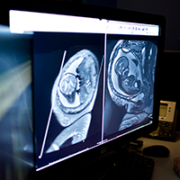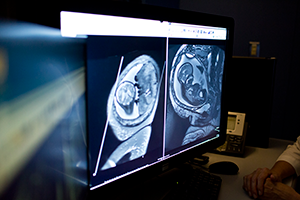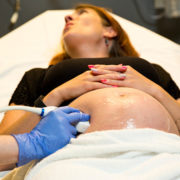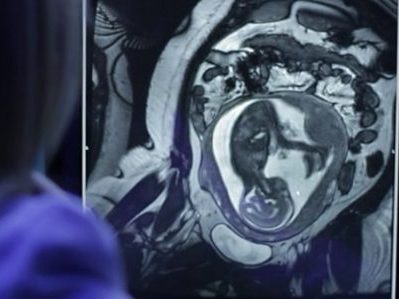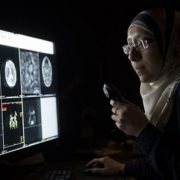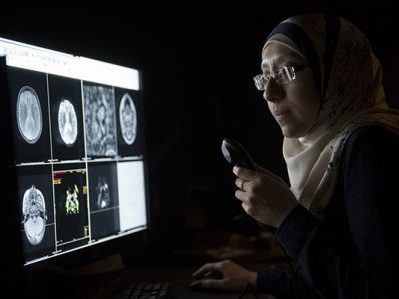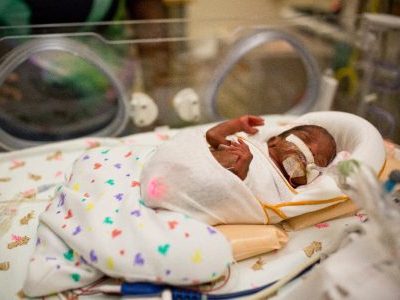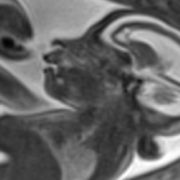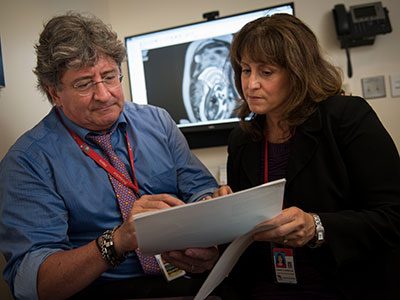New Children’s National and Inova collaboration

A new research collaboration will streamline completion of retrospective and prospective research studies, shedding light on myriad conditions that complicate pregnancies.
A new three-year, multi-million dollar research and education collaboration in maternal, fetal and neonatal medicine aims to improve the health of pregnant women and their children. The partnership between Children’s National Health System and Inova will yield a major, nationally competitive research and academic program in these areas that will leverage the strengths of both health care facilities and enhance the quality of care available for these vulnerable populations.
The collaboration will streamline completion of retrospective and prospective research studies, shedding light on a number of conditions that complicate pregnancies. It is one of several alliances between the two institutions aimed at improving the health and well-being of children in Northern Virginia and throughout the region.
“The Washington/Northern Virginia region has long had the capability to support a major, nationally competitive research and academic program in maternal and fetal medicine,” says Adre du Plessis, M.B.Ch.B., Director of the Fetal Medicine Institute at Children’s National and a co-Principal Investigator for this partnership. “The Children’s National/Inova maternal-fetal-neonatal research education program will fill this critical void.
“This new partnership will help to establish a closer joint education program between the two centers, working with the OB/Gyn residents at Inova and ensuring their involvement in Children’s National educational programs and weekly fetal case review meetings,” Dr. du Plessis adds.
Larry Maxwell, M.D., Chairman of Obstetrics and Gynecology at Inova Fairfax Medical Campus and a co-Principal Investigator for the collaboration, further emphasizes that “Inova’s experience in caring for women and children — combined with genomics- and proteomics-based research — will synergize with Children National’s leadership in neonatal pediatrics, placental biology and fetal magnetic resonance imaging (MRI) to create an unprecedented research consortium. This will set the stage for developing clinically actionable interventions for mothers and babies in metropolitan District of Columbia.”
Children’s National, ranked No. 3 nationally in neonatology, has expertise in pediatric neurology, fetal and neonatal neurology, fetal and pediatric cardiology, infectious diseases, genetics, neurodevelopment and dozens of additional pediatric medical subspecialties. Its clinicians are national leaders in next-generation imaging techniques, such as MRI. Eighteen specialties and 50 consultants evaluate more than 700 cases per year through its Fetal Medicine Institute. In mid-2016, Children’s National created a Congenital Zika Virus Program to serve as a dedicated resource for referring clinicians and pregnant women. The hospital performs deliveries in very high-risk, complex situations, but does not offer a routine labor and delivery program.
Inova Fairfax Medical Campus is home to both Inova Women’s Hospital and Inova Children’s Hospital. Inova Women’s Hospital is the region’s most comprehensive and highest-volume women’s hospital — delivering more than 10,000 babies in 2016. Inova Children’s Hospital serves as Northern Virginia’s children’s hospital —providing expert care in pediatric and fetal cardiology, cardiac surgery, genetics, complex general surgery, neurology, neurosurgery and other medical and surgical specialties. Its 108-bed Level IV neonatal intensive care unit is one of the largest and most comprehensive in the nation. Inova’s Translational Medicine Institute includes a genomics lab, as well as a research Institute focused on studies designed to build genetic models that help answer questions about individual disease. Each of these specialties is integrated into the Inova Fetal Care Center — which serves as a connection point between Inova Women’s and Children’s Hospitals. The Inova Fetal Care Center provides complex care coordination for women expecting infants with congenital anomalies or with other fetal concerns. Because Inova Women’s Hospital and Inova Children’s Hospital are co-located, women are able to deliver their babies in the same building where their children will receive care.
The research collaboration will support research assistants; tissue technicians; a placental biologist; as well as support for biomedical engineering, fetal-neonatal imaging, telemedicine, regulatory affairs and database management. The joint research projects that will take place under its auspices include:
- Fetal growth restriction (FGR), which occurs when the failing placenta cannot support the developing fetus adequately. FGR is a major cause of stillbirth and death, and newborns who survive face numerous risks for multiple types of ailments throughout their lives. A planned study will use quantitative MRI to identify signs of abnormal brain development in pregnancies complicated by FGR.
- Placental abnormalities, including placenta accreta. A planned study will combine quantitative MRI studies on the placenta during the third trimester and other points in time with formal histopathology to identify MRI signals of placenta health and disease.
- Microcephaly, a condition that is characterized by babies having a much smaller head size than expected due to such factors as interrupted brain development or brain damage during pregnancy. While the global Zika virus epidemic has heightened awareness of severe microcephaly cases, dozens of pregnancies in the region in recent years have been complicated by the birth defect for reasons other than Zika infection. A planned study will examine the interplay between MRI within the womb and head circumference and weight at birth to examine whether brain volume at birth correlates with the baby’s developmental outcomes.



